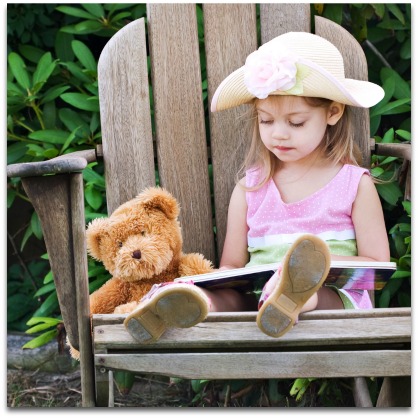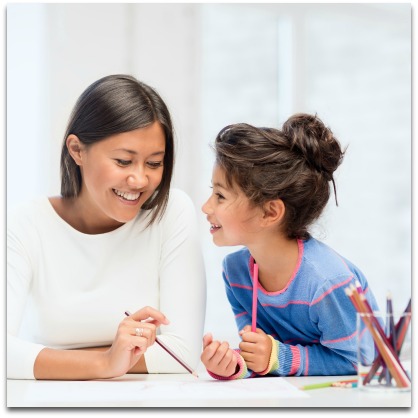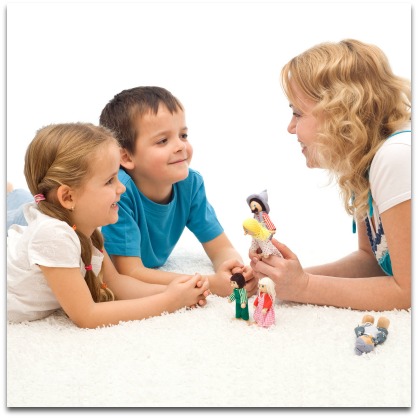 When my youngest was two he suddenly became obsessed with Halloween.
When my youngest was two he suddenly became obsessed with Halloween.
I’m sure a lot of my own enthusiasm for the holiday had something to do with it. As an American living in the U.K., I wanted my children to experience my favorite holiday. So, I threw a big party.
This became an annual tradition and it grew. Soon, I was renting the local village hall and inviting all thirty of my eldest son’s classmates. My youngest loved the scary characters, crafts, songs, and costumes, but his Halloween fixation continued long after Halloween.
As December approached I couldn’t interest him in Santa or snowmen or anything else having to do with Christmas. He wanted me to read him Halloween stories and he demanded Halloween songs at bedtime. I only knew two Halloween songs and I was getting fed up with them.
I soon started adapting classic songs to give them a Halloween twist. “How Much is that Doggy in the Window?” became “How Much is that Vampire in the Window?” My father-in-law came up with “99 Scary Monsters on the Wall” in lieu of “99 Bottles of Beer on the Wall”. That quickly became a favorite.
Why didn’t my youngest like dinosaurs like his big brother? His big brother impressed all of his teachers by pronouncing complex dinosaur names correctly (pachycephalosaurus, anyone?) and identifying them in books.
What were my son’s teachers going to think of me when he constantly talked about vampires with sharp fangs?
Having never shown any interest in drawing or writing, he suddenly began to draw Jack ‘O Lanterns. Pleased he had finally picked up some mark-making tools, I made a big deal of his Jack ‘O Lantern drawings. He was so proud.
Soon, I was collecting six pumpkin pictures a day from preschool. He drew them with pens, chalk, and crayons. He even painted them. They all had sharp teeth and scary eyes. I tried in vain to get him to draw other characters.
Then one day over lunch a mommy friend complimented him on how well he could draw at his young age. As I glanced at his sharp-toothed Jack ‘O Lanterns with new eyes, I realized that he had indeed become quite an artist in spite of my best efforts to get him to draw something else. It was then that I had an epiphany.
I should be encouraging my son’s passions instead of fighting against them!
I didn’t need to interest him in something more educational. He was learning through Halloween. Suddenly, I thought of all kinds of ways to create learning opportunities around his interests. After that, he blossomed and his growth was astounding.
All kids have their “thing.” That thing that they are the obsessed with. Your kid’s might be Legos or trucks or Paw Patrol. And inside those obsessions are tons of learning opportunities for drawing, math, science, reading, and history!
Here are 10 ways you can create learning opportunities around your child’s interests:
1. Read, Read, Read
 There are thousands of books out there just perfect for what your child is interested in. And for all ages and reading levels! Wizards, superheroes, robots, and yes, even Paw Patrol have books where they face problems, find solutions, and build friendships. These are great skills to learn at any age!
There are thousands of books out there just perfect for what your child is interested in. And for all ages and reading levels! Wizards, superheroes, robots, and yes, even Paw Patrol have books where they face problems, find solutions, and build friendships. These are great skills to learn at any age!
Little dinosaur books can be an early introduction to archaeology and anatomy, while complex mystery novels that older kids read will sharpen their powers of observation and deduction.
Plus they all teach your child TO LOVE BOOKS! That is a life-long skill! Once you hook them on reading about what they love they will keep reading.
Pediatricians now recommend reading to infants because “the development of early literacy skills through early experiences with books and stories is critically linked to a child’s success in learning to read.”
So, when your child demands that you read the latest Paw Patrol book for the zillionth time take comfort in the fact that you are actually helping pave the way for your child’s future reading success. And eventually, they will start reading about other things. I promise!
If you have older children the more they read (any material, even the Pokémon handbook), the more fluent their reading becomes and the more vocabulary they learn. In fact, “the British Cohort Study (BCS) found that children that read for fun are not just better at reading and English, they are better at all subjects. On a longer timeline, they have a better vocabulary as adults as well.
In fact, whether or not a child reads for pleasure at a young age can have more impact on their educational growth than socioeconomic status. As parents, we need to encourage reading for pleasure and to allow our children to select what they wish to read even if it is not what we would choose for them. Therefore, I vow to allow my eight-year-old son to read the Pokémon handbook.
2. Sing Songs
Singing with children has important learning benefits as well. A 2016 study at the University of Southern California’s Brain and Creativity Institute found that children who are exposed to music have accelerated brain development, particularly in the areas of language and reading.
Singing also accesses different areas of the brain so when you and your child sing the Spiderman theme song every night before bed you are ensuring that different parts of his brain are interacting with each other.
According to Professor Graham Welch, chair of music at the University College London Institute of Education, “singing behaviour is multi-sited neurologically and networked across many different brain areas… [and] singers tend to have greater connections between areas of the brain than non-singers.”
So, be loud and proud when you sing and stomp to Dinosaur Train’s “The Biggest Dinosaur.” Or as some of my mom friends couldn’t wait to let it go quickly enough… um… “Let it Go” from Frozen.
3. Play Rounding Up the Rhyme
This is a great strategy to help children recognize rhyming words. For younger children simply identify rhyming words from books, poems, or songs.
When I introduced this activity to my son, I wrote out the poem Five Little Pumpkins on a large sheet of butcher paper and hung it up on our mantel.
First, I read it to my son using my teacher pointer. Next, I had my son help me identify the rhyming words with the pointer. Then, I used my orange Halloween highlighter to highlight the rhyming words.
Finally, we listened closely to see how the rhyming words shared the same ending sounds. After this activity, we began to identify rhyming words in many of our bedtime stories.
If you have older children, encourage them to read poetry or even rap lyrics and write the rhyming words they find. Then they can use a highlighter to highlight the spelling patterns in these words.
Finally, generate a list of other words that use the same spelling patterns. This will help with spelling and show them some of the different rhyming structures present in poetry. Here is a link to a Rounding Up the Rhyme video if you would like to see it in action.
4. Create Your Own Thematic Stories, Songs, and Poems
 Creating our own stories is fun to do with children. They often have unique ideas and enjoy hearing them in verse. Older children can even create pop music or rap lyrics.
Creating our own stories is fun to do with children. They often have unique ideas and enjoy hearing them in verse. Older children can even create pop music or rap lyrics.
In her blog, Ava Parnass, a child psychotherapist writes, “kids who make up stories and songs build their imagination and creative abilities.”
My son and I decided to create a Halloween song together since I didn’t know very many to sing. Our song improved over time because he demanded it before bed each night.
This allowed me to model the editing process for him. I explained that musicians and writers continually edit and improve their compositions. This activity was good for me as well because it got my creative juices flowing again.
5. Record the Stories, Songs, and Poems
Record these stories, songs, and poems together using different forms of multimedia (YouTube, tape recorder, video recording, homemade book, e-book, etc.).
My husband recorded my son and I singing our Halloween song, “This is the Night.” My son instinctively added sound effects for the werewolves, witches, monsters, and ghosts. I now have a cute recording I will treasure when he is grown up and he got to use his creativity to enhance the song we composed together.
When my eldest son’s teacher assigned a science fair project to his class, my son decided to research how satellites work. We searched YouTube for child-friendly explanations of satellites and found very few videos.
We decided to create our own YouTube video explaining orbital speed and satellites. My son prepared and rehearsed his presentation. Then we recorded it.
I knew this activity would help him understand the scientific content because he was moving beyond the mere recall of scientific facts (Bloom’s Taxonomy). He had to explain it in his own words to others. This really consolidated his satellite understanding.
Recording song, poems, and stories is also good for older children who have difficulty with fine-motor control or who have an aversion to writing. Recording allows them to express themselves without the onus of writing itself. Children love recording themselves and watching/listening to their recordings.
6. Dramatic Play
 At our house we often make puppets and perform puppet shows behind the sofa in the living room. My youngest and I created 5 unique pumpkins and attached them to large Popsicle sticks. We then performed the poem, “5 Little Pumpkins” for my other son and my husband.
At our house we often make puppets and perform puppet shows behind the sofa in the living room. My youngest and I created 5 unique pumpkins and attached them to large Popsicle sticks. We then performed the poem, “5 Little Pumpkins” for my other son and my husband.
Research shows that, “in addition to oral language proficiency, dramatic play contributes to children’s developing narrative abilities (i.e., thinking in stories).”
My eldest got in on the act and soon the two of them spent days creating Halloween-themed puppet shows for my husband and me to watch. Working with his brother had further benefits for my son.
The research goes on the say, “In jointly creating a story with a partner or group, children must communicate their own ideas in ways that others can understand and integrate each partner’s ideas into a single coherent narrative.” My sons managed to cooperate enough to come up with some original puppet productions.
7. Musical Play
Put on some music that goes with your theme and create dance moves/vehicle movements or any kind of movements that go with your child’s interests.
My son decided Edvard Grieg’s classical composition, “In the Hall of the Mountain King,” sounded spooky so he repeatedly requested it on Alexa and marched around the living room making scary faces while it played.
Find some classical music to go with your child’s latest obsession. Susan Hallam, professor of education and music psychology at the IoE, evaluated a programme that introduces children aged seven to ten to classical music and its composers. She found that playing classical music such as Beethoven and Mozart to young children boosts their concentration and self-discipline.
You can also provide instruments like drums, tambourines, recorders, and jingle bells to liven up the music or even compose your own pieces.
8. Number Play
You can engage in number play through counting, poetry, adding/removing objects (like ghosts) and counting up and down. We did this with “5 Little Pumpkins” and then made up our own renditions of “5 Scary Vampires” and “10 Spooky Ghosts.”
Older children may enjoy researching the size, weight, and lifespan of dinosaurs or other animals and then comparing these statistics. Or, if they are geography buffs, you can even give them a map and have them measure out the distances between cities and then have them figure out how long it would take to drive there.
This is a great way to promote a solid understanding of numbers.
9. Write on different materials with a variety of drawing tools
 Use crayons, chalk, whiteboard pens, pencils, pens, and paint and make marks on a variety of surfaces like cardboard, whiteboards, sidewalks, paper, foil, etc.
Use crayons, chalk, whiteboard pens, pencils, pens, and paint and make marks on a variety of surfaces like cardboard, whiteboards, sidewalks, paper, foil, etc.
Experts have found that “the skill of writing begins with mark making…mark making opens the door for children to express themselves in a completely new way, offering them the opportunity to express their feelings and thoughts without relying solely upon verbal communication.”
You can even write or draw in the sandbox or squirt a blob of shaving cream on the table so your child can swirl it around to make unique designs or even letters. These sensory exercises connect the children to the writing in a deeper way.
Older children may wish to experiment with calligraphy or draw or write on different surfaces like textured paper. Steve Jobs even credited a calligraphy class he audited at Reed College for helping him develop the beautiful typography of the Macintosh computer.
10. Junk Modeling
Pull out your recycling box and let children make things out of whatever materials they find. They can make vehicles using milk top wheels or structures with spaghetti sticks and marshmallows.
Given my son’s obsession with Halloween, naturally we made a haunted house out of boxes and egg cartons.
Junk modeling is more that play. It is a form of engineering!
Teachers will do this at school. In fact, it is a critical component of the Early Years Foundation Curriculum in the United Kingdom where my children attend school. Ben Tawil, a senior lecturer on Play and Playwork at Leeds Becket University makes the following links between junk modeling and child development:
- Non-directive toys, materials, props, equipment and so on leave space for the child to exercise their creativity and inventiveness.
- Combining disparate materials, for example toilet rolls and a shoe box to make a robot is problem solving. More to the point, it is divergent problem solving, which is a higher-level thinking skill.
- We also understand now that play is about process much more than it is about product.
- The adaptability of junk, and the fact it can be used for different purposes and in different ways, helps support infinite process opportunities. The non-directive nature of junk means what is needed to make a robot one day, may be the exact same thing used to make a space station the next.
So, instead of groaning when you find the contents of your recycling container all over the floor and your child shows you an egg carton and box monstrosity, ask him what it is and why he chose the materials he did to create it.
BONUS: Have Fun!
Your child will love to see you engaged in something he loves. Learn and create right along with him!
This validates that what he loves is worthy of attention. The importance of co-play cannot be overestimated.
Studies have shown that “Parent-child pretend and physical play is linked with the child’s competence, gross motor skills, peer group leadership, and cognitive development.”
Not only will having fun over your child’s interest help him developmentally, but it will also strengthen that special bond you both share.
2-Minute Action Plan for Fine Parents
For our quick contemplation questions today, consider these –
What are your child’s interests? Have you been encouraging them? How can you incorporate his/her interests into each day? How can you use them to create learning opportunities?
What are your own interests? Are you passionate about something? Are you incorporating your own passions into your daily activities? Focus on how you feel when you carve out time for your own interests.
Long-Term Action Plan for Fine Parents
Carve out time to pursue your own passions/interests each day and share what you are doing with your children.
Discuss your child’s interests with them. If they are old enough, plan how to include their interests in the day. Together, think of ways to incorporate them into school projects and activities and how to learn through them.
For younger children encourage their interests. Go along with them and be enthusiastic about them. Soon you will be learning together.
Cool post, thanks to author for it!
Great article
Since we all learn differently, the more different techniques we use with our children give them more opportunities to deepen their understanding and make connections to what they already know. This article has some excellent ideas for doing that.
Thank you, Kathy.
Junk modeling can turn into a career. I have a friend that does beautiful art with all recycled materials.
My husband credits junk modeling for making him want to be an engineer, Deborah. It can definitely turn into a career.